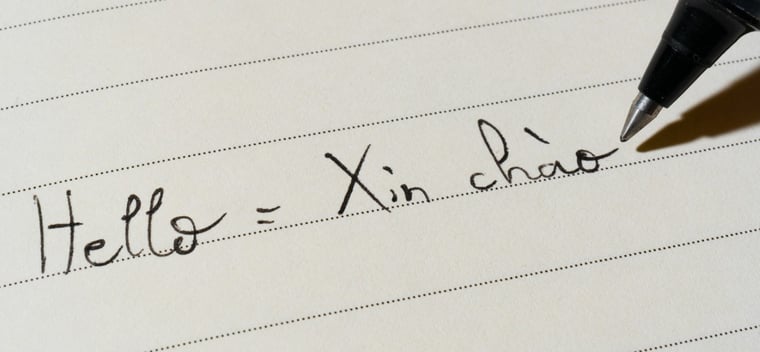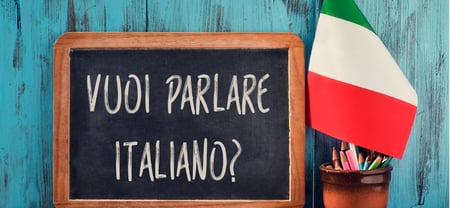Top 8 Considerations for Choosing a Vietnamese Translation Provider

When you're in the market for Vietnamese translation services, finding the right Language Services Provider (LSP) can seem overwhelming, especially considering the unique complexities and cultural richness of the Vietnamese language.
As you venture into the Vietnamese market, accuracy and cultural sensitivity in translations become crucial. Successful communication goes beyond mere language translation; it also requires a deep understanding of Vietnamese culture.
LinguaLinx has over two decades of experience in translation, covering over 200 languages. This background gives us profound insights into the Vietnamese market.
What should you look for in an LSP to ensure exceptional Vietnamese translations?
Does your LSP grasp the nuances of Vietnamese, including its tonal nature and regional variations, much like the differences between North and South Korean dialects? Are they capable of handling the subtleties of standard Vietnamese as well as regional dialects?
Do they have knowledge of Vietnamese business etiquette and cultural norms? Such understanding is key for effective communication and flexibility, enabling them to connect with diverse Vietnamese audiences, from urban centers like Hanoi to rural areas such as the Mekong Delta.
By considering these aspects, you'll better understand what comprehensive Vietnamese translation services entail. This guide will help you evaluate whether your current translation service truly captures the essence of Vietnamese. If not, it may be time to look elsewhere.
Top 8 Questions to Ask When Vetting a Vietnamese Translation Company
1. Which Vietnamese Dialects Are Most Relevant to Your Needs?
Vietnamese is rich in regional dialects. Understanding these dialects is vital for effective communication, particularly when targeting specific regions or communities.
For instance, the northern dialect centered around Hanoi can be quite different from the southern dialect prevalent in Ho Chi Minh City, such as the northern use of 'cơm' for rice, versus 'cơm tấm' in the south.
Additionally, the central dialects, such as those in Hue and Da Nang, have their own unique characteristics, including distinct tones and phrases. It's essential to identify which dialect or combination of dialects aligns best with your target audience to ensure your message resonates effectively.
2. Does Your Translation Partner Specialize in Your Industry?
Just as in the Korean market, understanding industry-specific terminology and cultural nuances in Vietnam is critical for successful business communication.
A proficient translation partner should have expertise not only in the Vietnamese language but also in your specific industry, whether it's technology, healthcare, or finance. This specialization ensures that they can accurately translate technical jargon and industry-specific concepts.
Additionally, an industry-specialized translator will be more adept at understanding the cultural nuances that are essential in your field, which is crucial for creating meaningful and effective communication in the Vietnamese context.
3. What Qualifications Do They Possess?
When assessing the credentials of your translation provider, it's crucial to consider certifications like ISO17100 and ISO 9001.
The ISO17100 certification is specifically tailored to translation services, ensuring that the provider maintains a high level of translator qualifications, effective project management, and exceptional customer service.
On the other hand, ISO 9001 focuses on quality management systems, verifying that the provider consistently meets customer requirements and strives for continual improvement.
These certifications are not just badges of honor; they represent a commitment to upholding international standards in translation quality and customer satisfaction, which are vital for successful global communication.
4. Are They Transparent About Their Process and Team?
Transparency in the workflow and team dynamics of your translation service is vital. It's important to know how they handle the translation process from start to finish, including their approach to managing complex translation projects.
Understanding the composition and expertise of their team can also provide insight into their ability to handle the nuances of the Vietnamese language effectively.
A good translation service should be open about their methods and willing to discuss how they ensure accuracy and cultural relevance in their translations, which are cr ucial for effective communication.
5. Do They Offer Scalable and Timely Services?
The ability of your LSP to offer scalable and timely services is crucial for meeting diverse business needs. They should have the capacity to handle both large-scale projects and smaller, more urgent tasks with equal efficiency.
Timeliness is key, as delays in translation can impact your business timelines and market strategies. Additionally, a flexible LSP can quickly adapt to changes in project scope or deadlines, ensuring that your translation needs are met without compromising on quality or accuracy.
6. Can They Handle Multiple Languages?
When your business grows, the need for translations in multiple languages often becomes a necessity, not just in Vietnamese. Therefore, it's essential to choose a translation partner capable of handling a wide range of languages.
This capability is particularly important for businesses operating in multiple countries or regions, where linguistic diversity is common. Moreover, working with a translation provider skilled in various languages can streamline communication processes and ensure consistency across different markets.
It's also a cost-effective strategy, as it eliminates the need to coordinate with multiple translation services for different languages.
7. Are They Skilled in Desktop Publishing?
The typographic challenges posed by the Vietnamese language require a translation service skilled in desktop publishing.
An effective LSP should be adept at handling the distinct fonts and character sets unique to Vietnamese, ensuring that the translated text is not only accurate but also visually coherent. This includes an understanding of how to properly lay out text to accommodate Vietnamese characters and tone marks, which can impact spacing and alignment.
Moreover, skilled desktop publishing ensures that the final product, whether it’s a brochure, website, or document, is professionally presented and maintains the integrity of the original design.
8. Have You Reviewed Their Past Projects?
Reviewing the past projects of a Vietnamese translation service is a crucial step in gauging their expertise and reliability. By examining their previous work, you can assess the quality, accuracy, and cultural relevance of their translations.
It's also important to look for consistency across different projects, which indicates a high level of professionalism and attention to detail.
Additionally, past projects can provide insight into their experience with specific industries or content types, helping you determine if they are the right fit for your unique translation needs.
Contact LinguaLinx for Your Vietnamese Translation Needs
Navigating the complex landscape of Vietnamese translations can be challenging, but LinguaLinx is here to simplify this process for you. With our ISO 17100 and ISO 9001 certifications, we guarantee top-tier quality and consistency in over 200 languages, including Vietnamese.
Our commitment to delivering accurate, culturally sensitive translations addresses your initial concerns about finding the right translation partner.
We invite you to schedule a free consultation with us. Let LinguaLinx be your trusted guide, ensuring your Vietnamese translation projects are managed with the highest level of expertise and care.






